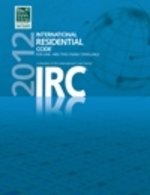2012 Washington State Energy Code
/January, 2014
By Bill Christenson
 The 2012 Washington State Energy Code (WSEC) went into effect July 1, 2013. This new WSEC is now based on the 2012 International Energy Conservation Code with State amendments. For residential construction this means better air sealing of the exterior envelope, more efficient windows, tighter sealing of duct work, and more high-efficacy lighting fixtures, plus many other changes from the 2009 code.
The 2012 Washington State Energy Code (WSEC) went into effect July 1, 2013. This new WSEC is now based on the 2012 International Energy Conservation Code with State amendments. For residential construction this means better air sealing of the exterior envelope, more efficient windows, tighter sealing of duct work, and more high-efficacy lighting fixtures, plus many other changes from the 2009 code.
As part of the building air tightness requirements, the code now allows the local building official to require an approved third party to inspect all components of air barrier system and verify compliance. Air leakage testing using the blower door method is also required after visual inspection of all sealing components. Test reports must be provided to the code official. Here again the local building official can require the testing be performed by an approved third party.
Duct work, air handlers and furnaces are all required to be sealed for air leakage. Similar to the 2009 WSEC, duct work is required to be leak tested by a qualified technician. Allowable duct leakage thresholds are stricter in the current code. Replacement of an existing furnace, air handling unit or air conditioning unit also triggers the duct testing requirement of the duct system connected to the new or replacement equipment.
Building insulation requirements at floors, walls and ceilings are consistent with the 2009 code, although the necessity for continuous exterior insulation on walls has been reduced to four counties in eastern Washington versus twelve per the 2009 code. Window efficiency requirements have been increased in the 2012 code calling for a U-factor of 0.30, up from the prior U-factor of 0.34. Also, the code mandates that a minimum of 75% of permanently installed lamps in lighting fixtures shall be high-efficacy lamps, up from 50% in the 2009 code.
Section R406 of the code addresses additional energy efficiency requirements and mandatory energy credit criteria. A typical single family residence (1500 sf – 5000 sf) now requires 1.5 energy credits in lieu of 1.0 credits previously.
Be informed and understand how the new code effects your project. You can view the entire 2012 WSEC for residential construction at: www.energy.wsu.edu/BuildingEfficiency/EnergyCode.aspx

